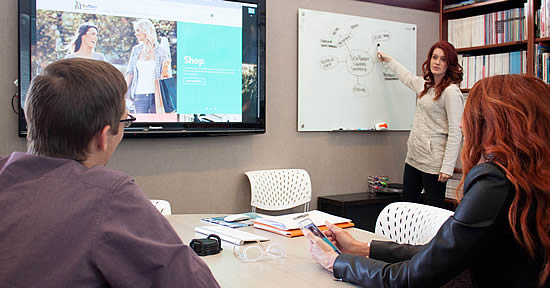Meeting Moxie
Nothing sucks productivity out of a workday like back-to-back meetings. We’ve been focusing on how to get the most out of our time together, while reducing our actual meeting time. We’ve found these simple suggestions to be the most helpful.
 |
On Time and On Track |
Start and end your meeting as planned. Don’t wait for people to wander in, get coffee and settle down. Circulate an agenda prior to the meeting and stick to it. If something is off topic, put it in the “parking lot” to discuss if there’s time at the end of the meeting or to be followed up on later.
Quickly going over the agenda at the outset helps squash discussions that don’t go anywhere and grandstanders who hog the stage. We don’t go as far as racing legend Niki Lauda, who preferred to hold meetings without chairs, though we understand the wisdom of his focused, don’t-let-people-get-too-comfortable approach.
As the meeting organizer, let the agenda and the clock be your guide. Put a hard stop on your meeting and reconvene later if you need to. You probably don’t.

 |
Freedom from Fear |
If you want a robust, healthy discussion, create an atmosphere of inclusion where people feel safe to participate. Make everyone feel free to share ideas without concern that they might be ridiculed or shot down. Encourage people to speak up. Listen to multiple voices. Make sure the same few people don’t dominate the conversation. If you’re the decision-maker, state your opinion last, otherwise you’re liable to get nothing more than a bunch of nods and, “My thoughts exactly.”
 |
Tools that Support not Detract |
If collaborators are not all in the same room and you’re using a video conferencing tool to share screens and video conference, ensure all parties have the needed log-in information well in advance. Test all connections, setup and screensharing before the meeting begins to prevent a troubleshooting scramble that frays nerves and eats up precious minutes.
The same rules of engagement still apply when meeting virtually. They are perhaps even more important. If your technology doesn’t let you see the other participants, be sure to have them state their name when they’re talking so you can keep the feedback straight.
 |
Decision Making |
Don’t waste people’s time. Show the meeting’s benefit in real time. Work through issues. Avoid rehashing old business. Empower decisions. Don’t be guilty of analysis paralysis. Know whether you’re seeking consensus, or if there’s a clear decision-maker in the room who will be making the final call. Come away with clear action items. Leave a few moments to discuss next steps and delegate who is doing what and by when.
 |
Truly Noteworthy |
If you’re running the meeting someone else should act as the official scribe. That said, you should still jot down notes for yourself - recording key points and things you should follow up on. Ideally, meeting notes with action items should go out within 24 hours of the meeting. Using a management tool such as Google Docs or Basecamp makes it easy for you to share the link and get input from other attendees who may have caught something you missed or came away from the meeting with a different takeaway. Just as meetings should be collaborative, so should your writeup. This reduces the need for multiple versions of your document and the chance of sending out the wrong one as the final.
 |
Collective |
Forego the endless email chains and talk directly with your peers. Meetings create powerful opportunities to share, connect and energize. They could be the best part of the day. Done right, they can be. And, if all else fails, you can always remove all the chairs.
| © BlueSky Business Aviation News Ltd 2008-2019 |



